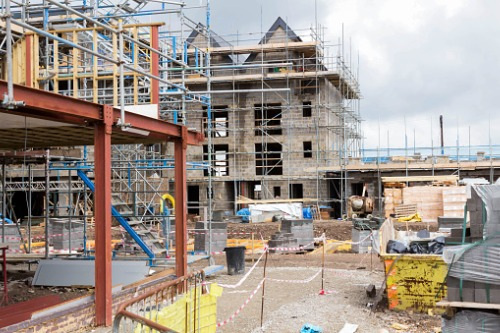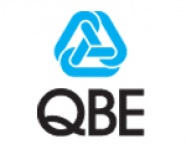5 focus areas to mitigate risk in modular construction

Authored by QBE Risk Solutions Practice Leader David Dexter
As the modular construction industry grows post-pandemic, businesses should address underwriter concerns to ensure commercial resilience going forward
The term ‘pre-fab’ might conjure images of post-war housing, thrown up at speed – but the advantages of modular construction are making this building model impossible to overlook.
With benefits ranging from safer working (for example, fewer people working at height and reduced hot works on site) to more efficient assurance systems, accelerated operations and budget savings, research shows there has been increased use of modular building methods since the COVID-19 pandemic.
A cocktail of socioeconomic factors including inflationary rises, sustainability targets, skilled labour shortages and built-up consumer demand, have made the efficiency of modular building attractive to construction companies operating under pressure. To put it in context, the global modular construction market is projected to grow at a compound annual growth rate (CAGR) of 5.5% to $142.06bn by 2028, up from $103.09bn in 2022.
However, while growing numbers of construction companies are adopting the modular building model, it’s important for businesses to ensure they are adequately protected. In 2021 the International Association of Engineering Insurers (IMIA) issued a Working Group Paper on Modular Construction following large insurance losses on several projects using modular processes – and in a poll of 70+ underwriters most felt that modular presented a higher risk to insurers than traditional building methods.
Underwriters are concerned about losses in this sector, and to stay protected, businesses should look to carefully address their risk profiles to lower the likelihood of accidents and failures.
As modular construction uses a different model to conventional building, any pre-existing risk assessments for standard projects and/or sites cannot be simply used or applied.
Essential focus areas for mitigating modular construction risk include:
1. Supply chain quality and resilience
• Account for potential delays due to extreme weather, material incompatibilities, accidental damage, late delivery, and cyber security.
• Consider possibilities of lower risk management standards of design and manufacture, alongside potential risk factors during marine transit and jurisdictional differences in manufacture of units from less regulated territories overseas.
• Ensure that project schedules are appropriately assessed and coordinated with supply chain delivery, as unrealistic deadlines aggravate risks.
Such assessments may include consideration of:
o Central organisation, management and assigned accountabilities.
o Detailed supervision to oversee project execution on site.
o Provision of high-level support and coordination, quality control, planning, cost control, engineering, and procurement.
o Module transportation and coordination of relevant contractors.
2. Physical risk
• Transit risks require that transport, offloading and placement of modular units, should fit within a traffic management plan and risk assessment, identifying the responsibilities involved for all processes.
Areas of planning focus may include:
o Distance and road conditions between the factory and construction site.
o Driver training and competency checks.
o Condition of any temporary roads constructed around the project site which must be able to accommodate the weight and size of the module delivery.
o Exposure to cold, heat or moisture during transport.
• Consider storage risks including exposure to external events, such as extreme weather, or potential third-party damage e.g., from vehicles.
3. Inspection programmes and checks
• Establish inspection and quality control checklists for series defects across design, workmanship, materials and/or specification before factory dispatch and on arrival to site.
Inspection programmes may include:
o Factory acceptance
o Loading checks
o Unloading checks
o Storage environment / protection checks
o Temporary protection checks during installation
• Integrate pre-installation quality checks including a practice procedure for each project, to test components connectivity.
• Address the risk of damage – this is a more common fault in modular construction where there is insufficient strength of prefabricated concrete components and/or insufficient strength when lifting occurs.
• Encourage all involved parties (including insurers) to understand when and how inspections take place in the factory and quality inspection and assurance systems and processes.
4. Competency & Compliance
• Ensure all participants are certified and accredited in accordance with applicable standards e.g., BOPAS
• Use experienced design and project management teams.
• Identify knowledge and skills gaps for high-risk activities such as lifting and transport.
• Ensure use of experienced manufacturer, project team and that there are competent and experienced site operatives.
5. Onsite damage response
• Be aware that operational impact is greater if modules are already damaged before installation or damaged in situ, as reinstatement costs are significantly higher than the cost of original factory work. This is particularly so if structural elements are impacted.
Assessment for onsite damage should consider:
o Errors in lifting operations
o Fire, extreme weather, or natural catastrophe
o Mismatches between modules and foundations
• Address foreseeable risks across all areas within response plans.
Building into the future
The future of construction will likely see modular building methods used across the industry, from private homes and social housing, right through to schools, healthcare settings and public buildings.
For those businesses taking advantage of the modular model, it’s crucial to work with your insurance provider to discuss risk assessments, response plans and a range of coverage options to ensure future resilience.
QBE Contractors Combined Insurance
Every project can be different, so contractors need to be open-minded, agile, and adaptable. That’s why we have the insurance to match. Our new Contractors Combined packages the main insurance covers into a single policy to meet the specific needs of the mid-market contracting sector.
Customers can also access a library of Risk Snapshot guides, guidance notes, toolkits, and other risk management material, along with RoSPA accredited online health and safety e-learning.
You can find out more about QBE Contractors Combined insurance here.
Risk management services for QBE customers
QBE helps businesses build resilience through risk management and insurance.
Depending upon the size and complexity of the business needs, QBE customers can access a wide range of risk management services, self-assessment questionnaires and risk management toolkits which are focused on the key causes of claims, and on generating action plans for improved outcomes - including protecting employees, reducing risk, and making claims less likely.
You can find out more about how QBE helps businesses to manage risk here.
About QBE
QBE European Operations is part of QBE Insurance Group, one of the world’s leading international insurers and reinsurers and Standard & Poor’s A+ rated. Listed on the Australian Securities Exchange, QBE’s gross written premium for the year ended 31 December 2018 was US$13.7 billion.
As a business insurance specialist, QBE European Operations offers a range of insurance products from the standard suite of property, casualty and motor to the specialist financial lines, marine and energy. All are tailored to the individual needs of our small, medium and large client base.
We understand the crucial role that effective risk management plays in all organisations and work hard to understand our clients’ businesses so that we offer insurance solutions that meet their needs – from complex programmes to simpler e-trading solutions – and support them in minimising their risk exposures. Our expert risk management and rehabilitation practitioners focus on helping clients improve their risk management so that they may benefit from a reduction in claims frequency and costs.

